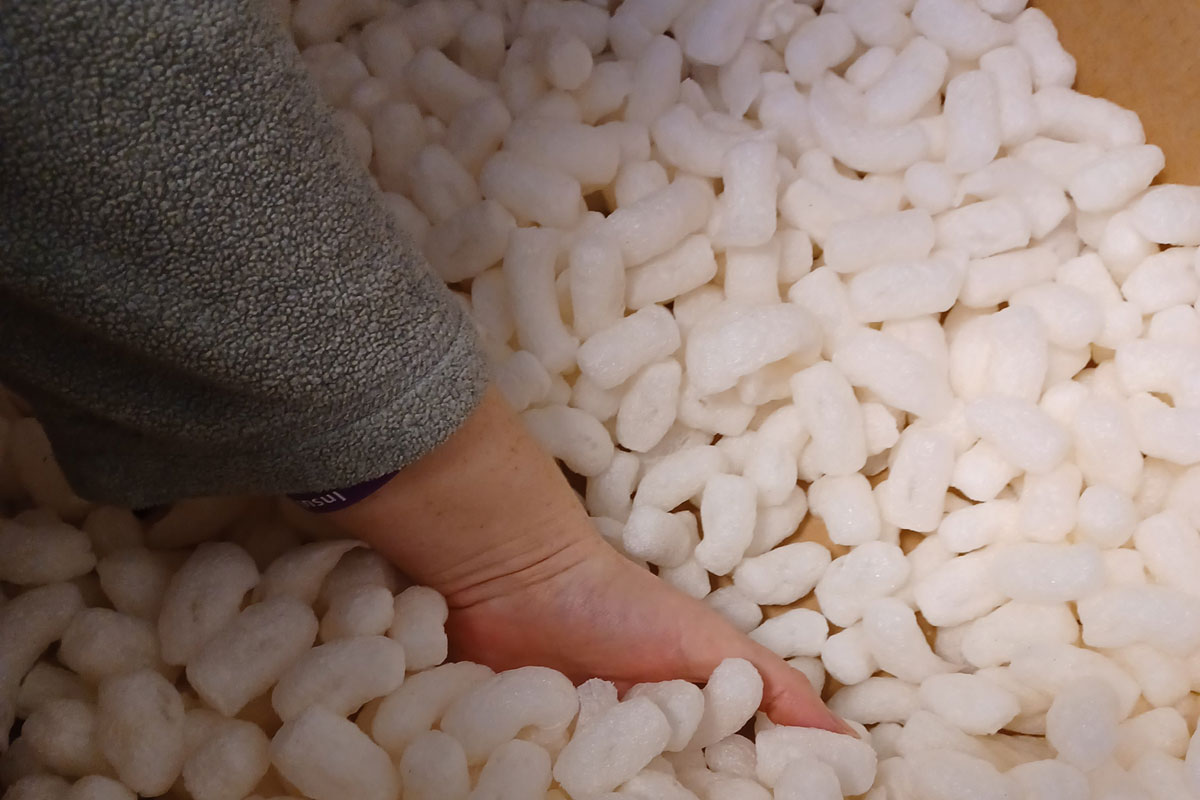News

Sustainable Packaging Options Are Growing

By Emily Mansfield, PCCD Communications Coordinator
When at the grocery store, can you check out and leave plastic-free? It would be quite the challenge. Bringing along reusable shopping bags to avoid disposable plastic ones is a common and positive sustainable practice, but what about the plastic on the shelves and in our carts? Plastic is wrapped around heads of lettuce, keeps milk and juices in bottles, holds cereal, crackers, chips, and more inside bags, and contains margarine, yogurt, sour cream, and salsa in jars. Many of these products require packaging to avoid contamination and spoiling, but these plastic linings take hundreds of years to break down (and the smaller pieces can end up in water supplies, animals, and our own blood streams!). Luckily, there are many people working to develop alternatives to plastic packaging that are more eco-friendly but just as practical.
A university professor, Hongli Zhu, recently created a new food packaging made from bamboo and the sucrose byproduct of sugar processing (Burns 2021). While many products and packaging are advertised as “compostable,” they are often only “commercially compostable,” meaning that they need to be broken down in a large facility with higher temperatures than home compost bins (US EPA). However, Professor Zhu’s packaging can break down in a home compost in a mere 60 days once covered with soil! How does it not break down on the shelves, then? When buried under the soil, the microorganisms living there break the packaging down, but inside a building without exposure to these organisms, the packaging remains sturdy for a long time.
The grocery store isn’t the only place where plastic packaging abounds. When your dinosaur laptop finally crashes and you order a replacement, your new investment is typically (and thankfully!) protected with cushioning. This packaging, along with that of electronic appliances, furniture, and more, is usually made from polystyrene, more commonly referred to as Styrofoam (Cansler 2023). This can take thousands of years to break down! There’s an alternative hiding under our feet though, and it’s starting to make its way into the light and into industry. Mycelium is the thin fibrous part of fungi that grows underground and is often compared to the roots of plants. Mycelium can be grown in molds to form a specific shape, like a protective packaging, and it can grow in just a couple weeks (Mehlhase 2024)! This mycelium packaging is already breaking out of the lab and into carts, with major furniture and technology companies testing out the technology to ship their products (Cumbers 2023).
It can be frustrating seeing so much plastic in our lives and feeling like we don’t have an option to avoid it when making purchases. Luckily, the science is here to replace much of that packaging with nature-based products, and the possibilities are growing every day. Hopefully we will soon see more of these plastic-free packaging options. Considering 80% of consumers in the US consider sustainability when choosing products to purchase, companies who make those products and packaging decisions will need to pivot to eco-friendly options to retain their customers (US Department of the Interior). Consider contacting your favorite companies to let them know that sustainable packaging is important to you. These companies also pay close attention to consumer spending habits, and if many people are choosing to purchase products with sustainable packaging when available, companies will likely invest in those technologies to reach their audience. Afterall, packaging is part of the product’s cost, and why should we have to pay for plastic packaging if we don’t want it? While the saying goes “put your money where your mouth is,” we hope you’ll remember to take the packaging off your lettuce before it gets that far.
Burns, J. (2021, January 29). Replacing Plastic: A Biodegradable Alternative. The Center for Research Innovation. https://cri.northeastern.edu/zhu-biodegradable-plastic/
Cansler, C. (2023, April 28). Styrofoam, a Practical and Problematic Creation. Science History Institute. https://www.sciencehistory.org/stories/magazine/styrofoam-a-practical-and-problematic-creation/
Cumbers, J. (2023, May 11). Ecovative: Growing Better Materials. Forbes. https://www.forbes.com/sites/johncumbers/2023/05/10/ecovative-growing-better-materials/
Mehlhase, S. (2024, September 2). Using fungal mycelium as the basis for sustainable products. Phys.org. https://phys.org/news/2024-09-fungal-mycelium-basis-sustainable-products.html
U.S. Department of the Interior. (n.d.). The Future of Plastic Alternatives. National Park Service. https://www.nps.gov/articles/000/plastic-alternatives.htm
United States Environmental Protection Agency. (n.d.). hEPA. https://www.epa.gov/trash-free-waters/frequently-asked-questions-about-plastic-recycling-and-composting#:~:text=In%20order%20for%20a%20plastic,commercial%20or%20industrial%20composting%20facility.
